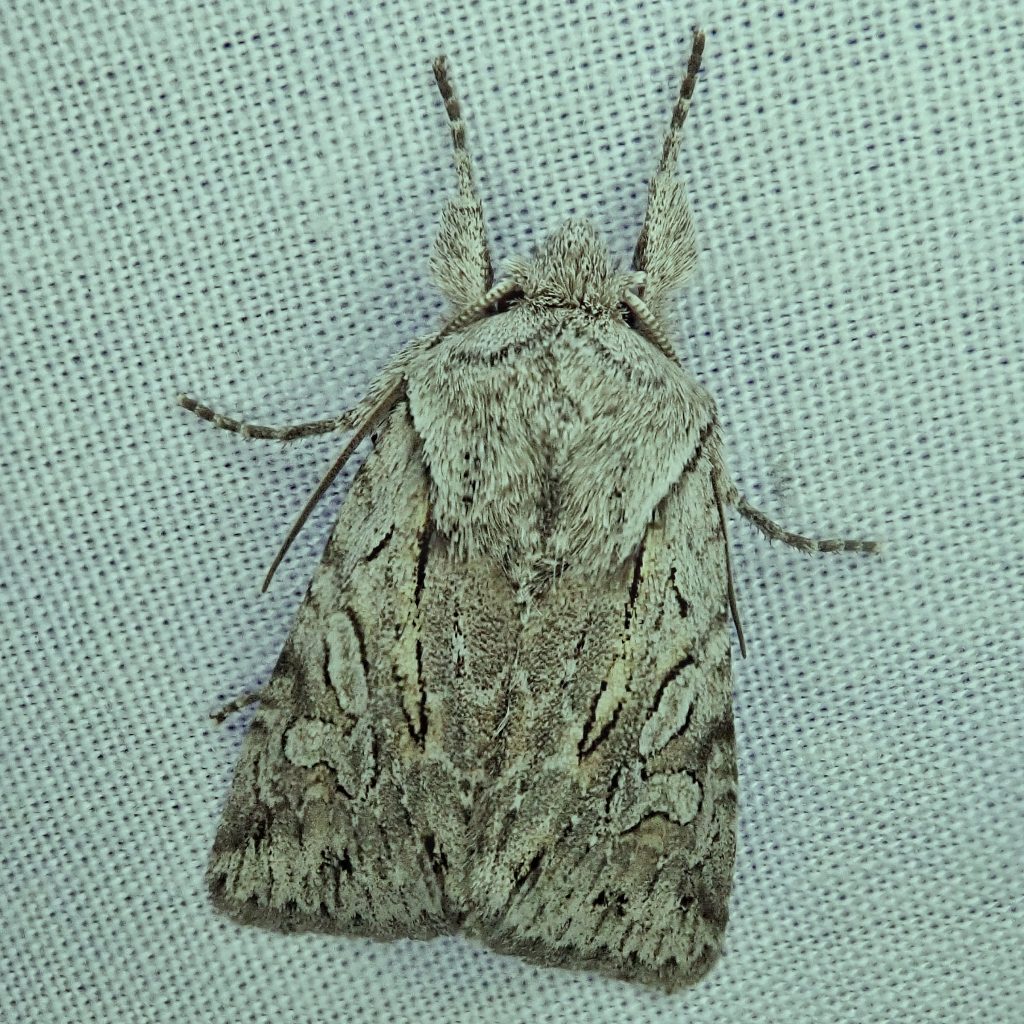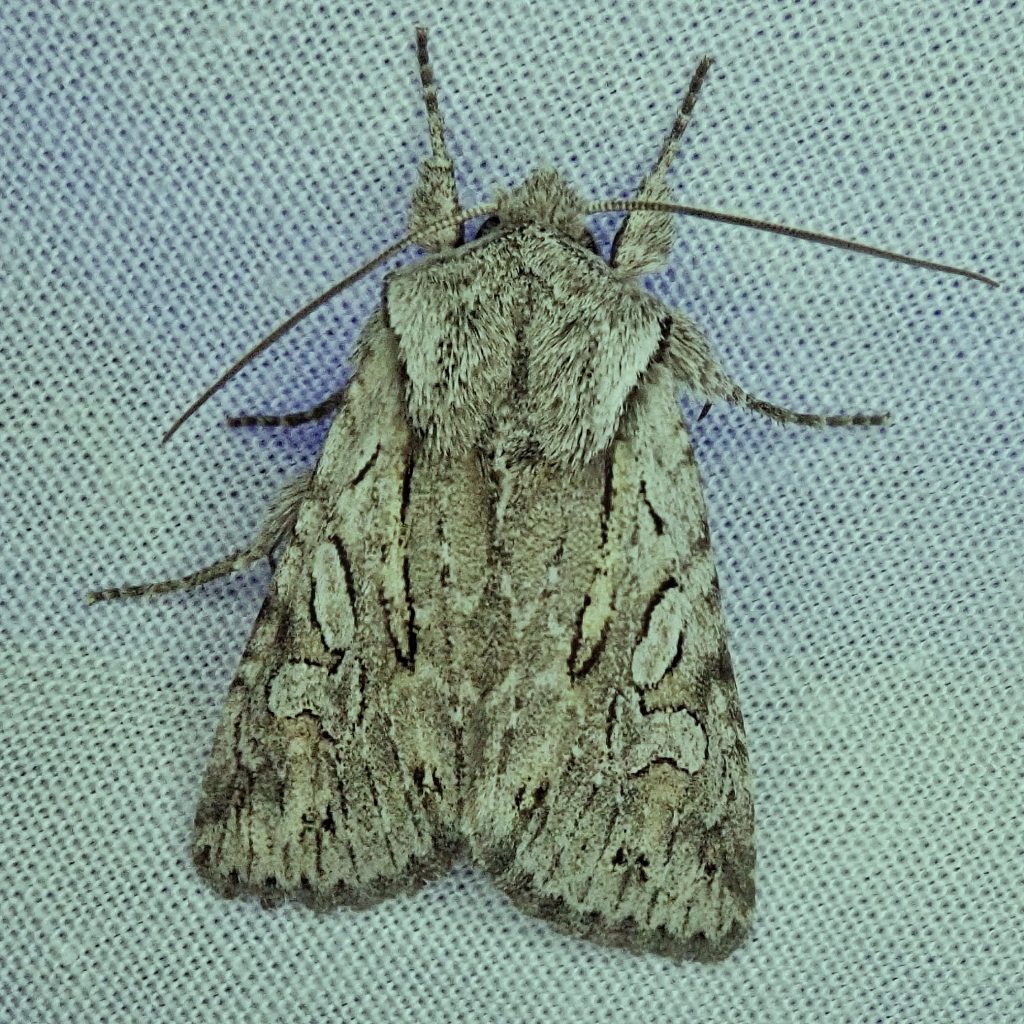
This little Noctuid was the only lifer moth I found in two night of mothing at Kelly Rupp’s along Willapa Bay. The habitat is similar to many that I’ve run lights in, so I wasn’t disappointed, although the overall numbers were low enough that I’m sure inclement weather was also a factor. I know it’s a productive environment for moths, because right across the bay Dick Wilson has collected over 500 different species in the last 15 years.
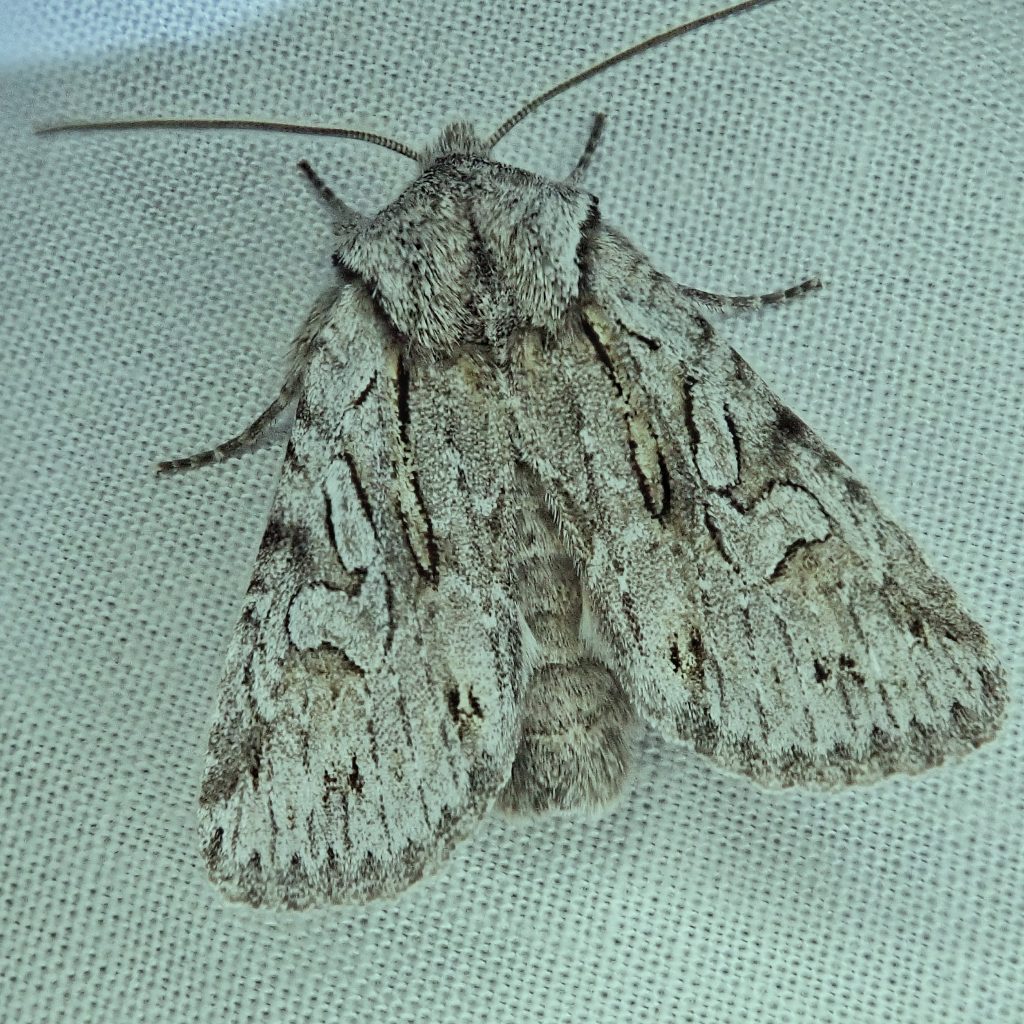
One very interesting thing about Lacinipolia patalis is that about 30 years ago a new host plant was discovered for this species. That in itself was particularly unusual, because new host plants are frequently found for undersurveyed insects. What was surprising was that a species that had always been considered something of a specialist on the leaves of members of Rosaceae, was found infesting the cones of Douglas fir! That is a huge change in diet, and one that seemed to happen almost overnight. No one is sure how this came about, but it has been documented several times since.
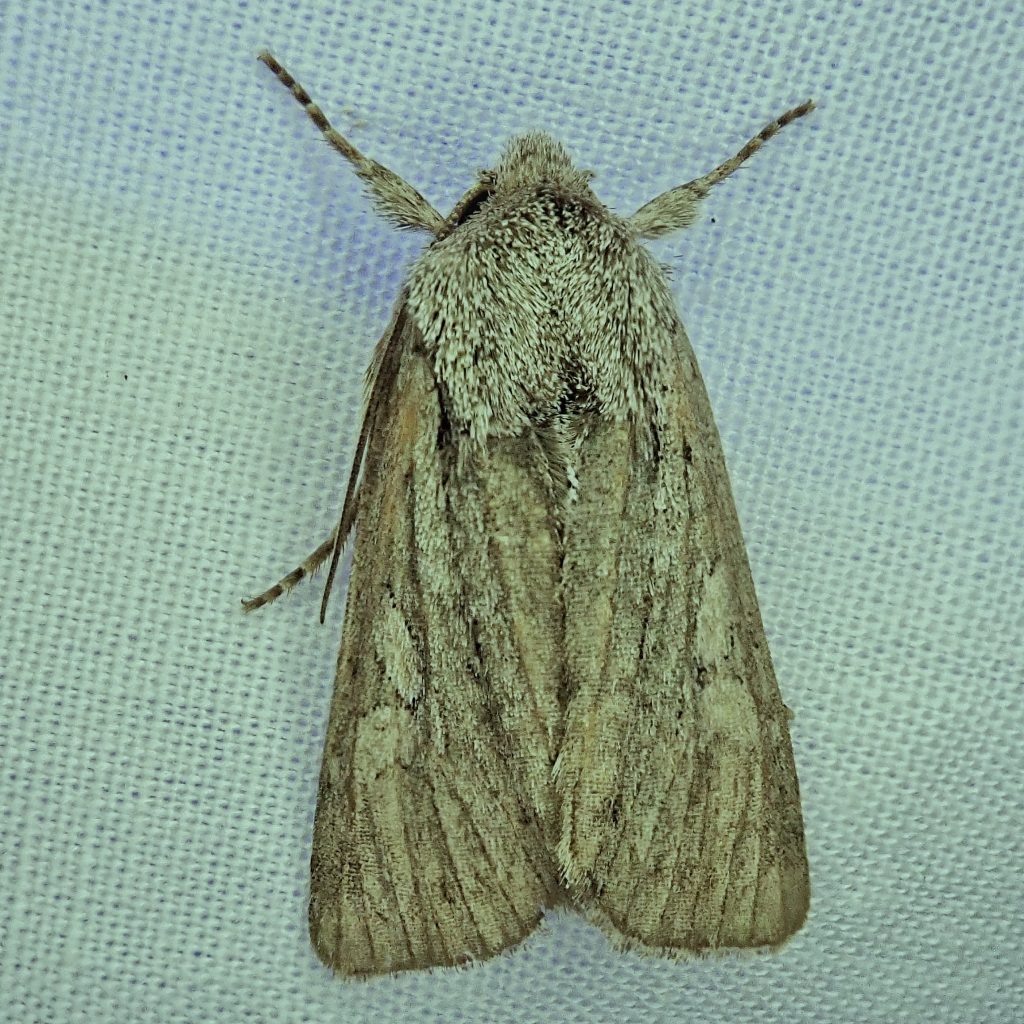
Description-Small (fw length 13-14mm) gray moth with fused orbicular and reniform spots, a black and white basal dash, a short dash above the orbicular spot, a pointed claviform spot filled with lighter grey and outlined in black, and a few black dots marking the subterminal line; hindwing is light grey with dark veins, and usually has no other markings.
Similar species-The fused reniform and orbicular spots, coupled with the black and white basal dash, are diagnostic for this species.
Habitat-Moist coniferous and mixed forests at low to mid elevations.
Range-Pacific Cost; primarily west of the Cascades in our region.
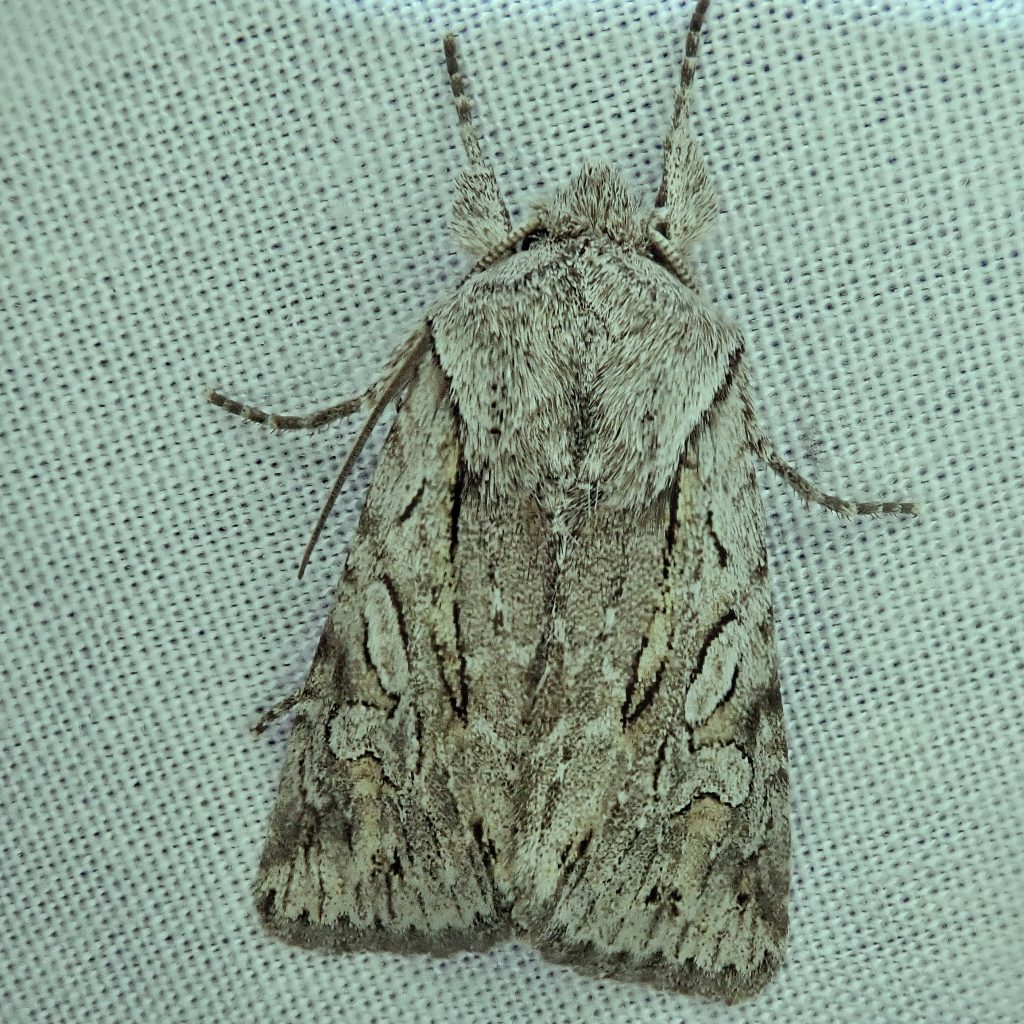
Eats– Larval host are usually wild roses, blackberries, thimbleberries, salmonberries, and other species in the genera Rosa and Rubus, but they have recently also been found in the cones of Douglas fir.
Reproduction-Apparently univoltine, and larva overwinter as pupa in diapause.
Adults active-May through July
Etymology of names– Lacinipolia comes from the Greek words for ‘broken grey’, and seems to refer to this genus being similar to the genus Polia. The specific epithet patalis seems to be a Latin suffix for ‘pertaining to’ on the Greek word for path. But, as usual, Grote didn’t bother to explain what path this may reference.
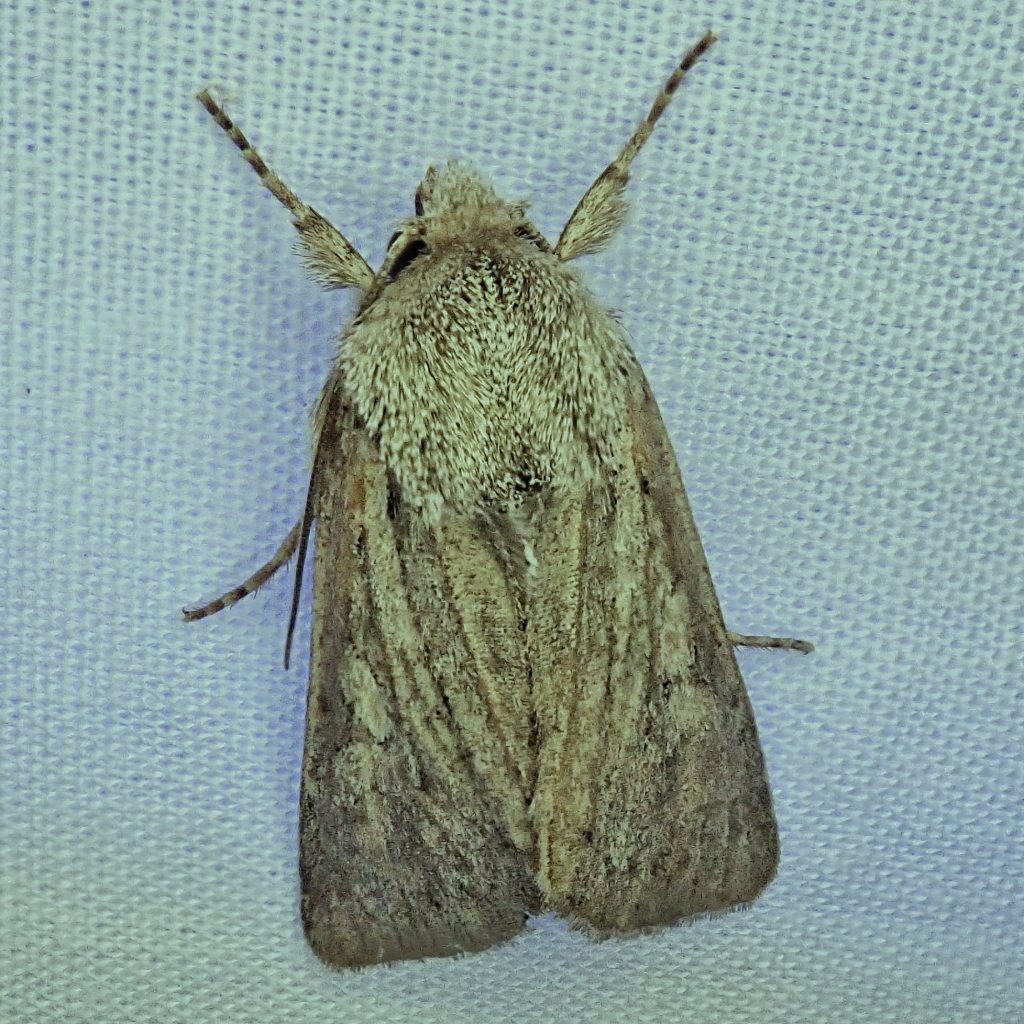
https://bugguide.net/node/view/117937
http://mothphotographersgroup.msstate.edu/species.php?hodges=10423
https://www.fs.usda.gov/treesearch/pubs/29385
